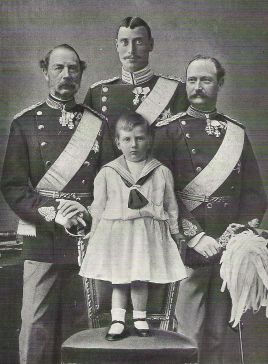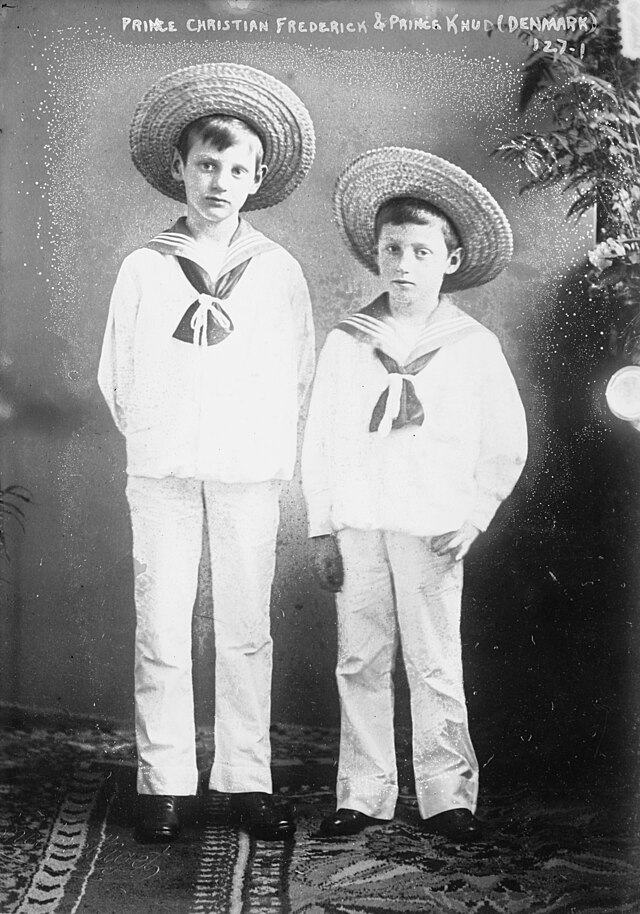by Susan Flantzer © Unofficial Royalty 2015
Alexandra Christina Manley was born in Hong Kong on June 30, 1964. Her father Richard Manley (1924 – 2010), an insurance company executive, was born in Shanghai, China to a British father and a Chinese mother. Her mother Christa Nowotny, born in 1933 in Austria, is of Austrian and Czech descent and worked as a manager for a communications company. Alexandra has two sisters Nicola Baird and Martina Bent.
Alexandra received her primary and secondary education in Hong Kong at Quarry Bay School, Glenealy School and Island School. She studied business at universities in Austria, Japan, and the United Kingdom. From 1990 – 1995, Alexandra was employed by GT Management (Asia) Ltd. in Hong Kong.
Alexandra met Prince Joachim of Denmark, the younger son of Queen Margrethe II of Denmark, while he was working in Hong Kong. Their engagement, which surprised both families, was announced in May 1995. To marry Joachim, Alexandra had to give up her career, renounce her British citizenship, and change her religion from Anglican to Evangelical Lutheran. On November 18, 1995, the couple was married at the Frederiksborg Palace Chapel in Hillerød, Denmark. Upon her marriage, Alexandra was styled Her Royal Highness Princess Alexandra of Denmark.
Alexandra and Prince Joachim had two sons:
- His Excellency Count Nikolai of Monpezat (born 1999)
- His Excellency Count Felix of Monpezat (born 2002)
Queen Margrethe II decided that as of January 1, 2023, the children of Prince Joachim would no longer hold the style and title of His/Her Prince/Princess. Instead, they will hold the title Count/Countess of Monpezat, with the style of His/Her Excellency. This slimming down is in keeping with recent changes in other royal families and will allow Prince Joachim’s children to pursue more independent lives and careers. The Monpezat titles come from the Queen’s late husband, Prince Henrik, who was Count of Monpezat. In 2008, Queen Margrethe granted the title to her sons and their descendants as well.
Alexandra adjusted well to living in Denmark. Her fluency in German helped her to learn Danish quickly. She became involved in a number of worthwhile organizations including the Children’s Red Cross, the Danish Society for the Blind, UNICEF, and Mother Help, single mothers’ advocacy group. She also served as a UNICEF ambassador when she traveled to Thailand to visit HIV/AIDS patients.
In 2004, rumors began to circulate that Joachim and Alexandra’s marriage had problems. Their separation and their intention to divorce was announced on September 16, 2004, and their divorce was final on April 8, 2005. The Danish parliament decided to provide Alexandra with an income from the civil list for life regardless of her marriage situation. Alexandra retained her title Princess of Denmark, with the lower style of Her Highness until her remarriage in 2007. In addition, Queen Margrethe II had granted her the personal title of Countess of Frederiksborg with the style of Excellency, and Alexandra is now known as Her Excellency Countess Alexandra of Frederiksborg.
On March 3, 2007, Alexandra married Martin Jørgensen (born March 2, 1978), a photographer 14 years younger than her. The couple divorced in 2015. Alexandra had joint custody of her two sons with her former husband Prince Joachim who also remarried. Joachim and Alexandra have maintained close ties and are often seen together with their sons. Alexandra attends events involving the Danish Royal Family such as the 40th Jubilee of Queen Margrethe II which she attended with her former husband Martin Jørgensen as seen in the photo below.
On June 23, 2017, Alexandra announced that she would renounce her yearly allowance of 2.1m kroner (US $330,000) in July 2020, coinciding with the 18th birthday of her younger son Felix.
In October 2017, it was announced that Alexandra had joined the Kelley School of Business, the business school of Indiana University in Bloomington, Indiana, in the position of the Poling Chair of Business and Government for the 2017-2018 academic year. The press release from Indiana University stated that “Recipients of the Poling Chair are given the charge to stimulate discussion in the areas of leadership, the critical interactions between private business and government in matters of public policy, enterprise competitiveness, and economic growth.”
This article is the intellectual property of Unofficial Royalty and is NOT TO BE COPIED, EDITED, OR POSTED IN ANY FORM ON ANOTHER WEBSITE under any circumstances. It is permissible to use a link that directs to Unofficial Royalty.














